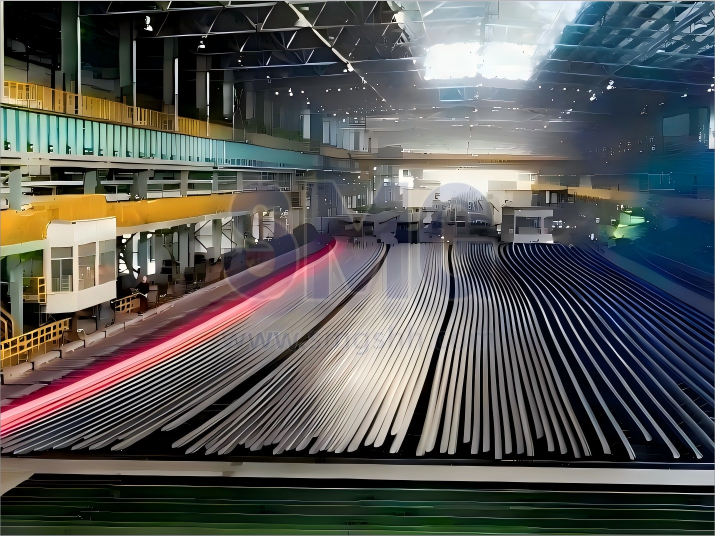
Date: 2025/7/14

Category: Metallurgical encyclopedia terms

Views: 526
White spots were once a major defect in steel rails, caused by the precipitation and aggregation of hydrogen dissolved in molten steel during crystallization and cooling. Traditional processes required slow cooling in insulation pits after hot rolling to eliminate white spots, but this method prolonged production cycles and occupied significant workshop space.
After years of research, China now implements full-process hydrogen control during smelting (hydrogen content strictly below 1.5×10-4%, far lower than the critical value of 2.0×10-4%), combined with pile cooling of continuous casting billets. This allows trace hydrogen to fully precipitate during crystallization and pile cooling. Consequently, modern rail production has eliminated slow cooling, adopting offline pile cooling or online cooling on walking beam cooling beds.
New cooling bed equipment incorporates a pre-bending mechanism at the entrance to counteract bending induced by uneven cross-sectional temperatures, significantly reducing pre-straightening curvature and post-straightening residual stress. Rails without pre-bending exhibit approximately twice the residual stress of pre-bent rails, with base residual stress accelerating the propagation of transverse cracks (primary or secondary) and leading to rail fracture.


Phone



Address